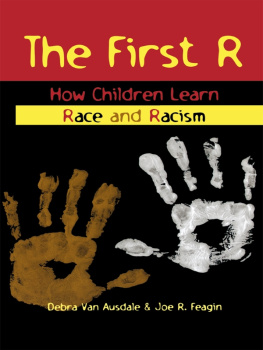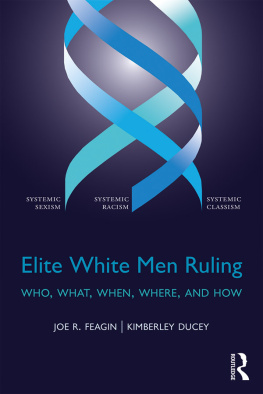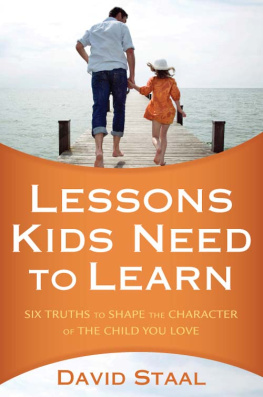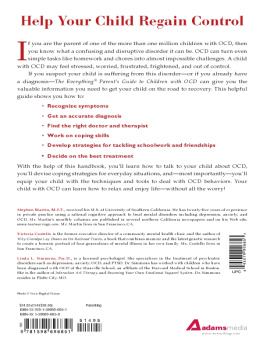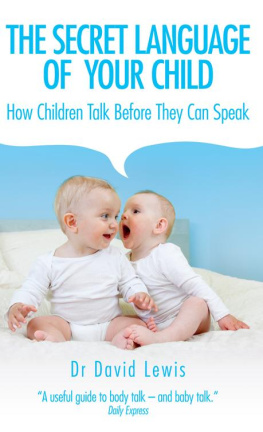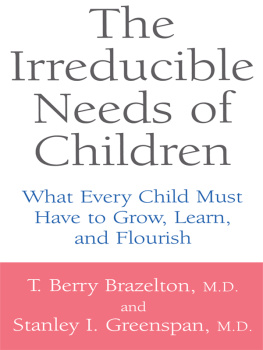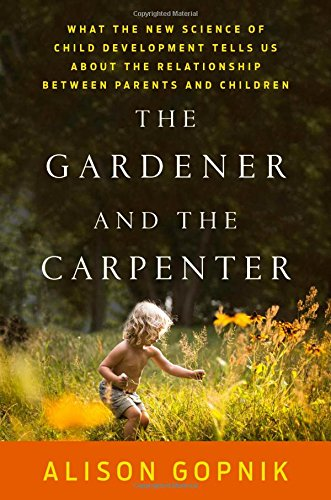Joe R. Feagin - The First R: How Children Learn Race and Racism
Here you can read online Joe R. Feagin - The First R: How Children Learn Race and Racism full text of the book (entire story) in english for free. Download pdf and epub, get meaning, cover and reviews about this ebook. year: 2001, publisher: Rowman & Littlefield Publishers, genre: Children. Description of the work, (preface) as well as reviews are available. Best literature library LitArk.com created for fans of good reading and offers a wide selection of genres:
Romance novel
Science fiction
Adventure
Detective
Science
History
Home and family
Prose
Art
Politics
Computer
Non-fiction
Religion
Business
Children
Humor
Choose a favorite category and find really read worthwhile books. Enjoy immersion in the world of imagination, feel the emotions of the characters or learn something new for yourself, make an fascinating discovery.
- Book:The First R: How Children Learn Race and Racism
- Author:
- Publisher:Rowman & Littlefield Publishers
- Genre:
- Year:2001
- Rating:4 / 5
- Favourites:Add to favourites
- Your mark:
- 80
- 1
- 2
- 3
- 4
- 5
The First R: How Children Learn Race and Racism: summary, description and annotation
We offer to read an annotation, description, summary or preface (depends on what the author of the book "The First R: How Children Learn Race and Racism" wrote himself). If you haven't found the necessary information about the book — write in the comments, we will try to find it.
Parents and teachers will find this remarkable study reveals that the answer to how children learn about race might be more startling than could be imagined.
The First R: How Children Learn Race and Racism — read online for free the complete book (whole text) full work
Below is the text of the book, divided by pages. System saving the place of the last page read, allows you to conveniently read the book "The First R: How Children Learn Race and Racism" online for free, without having to search again every time where you left off. Put a bookmark, and you can go to the page where you finished reading at any time.
Font size:
Interval:
Bookmark:
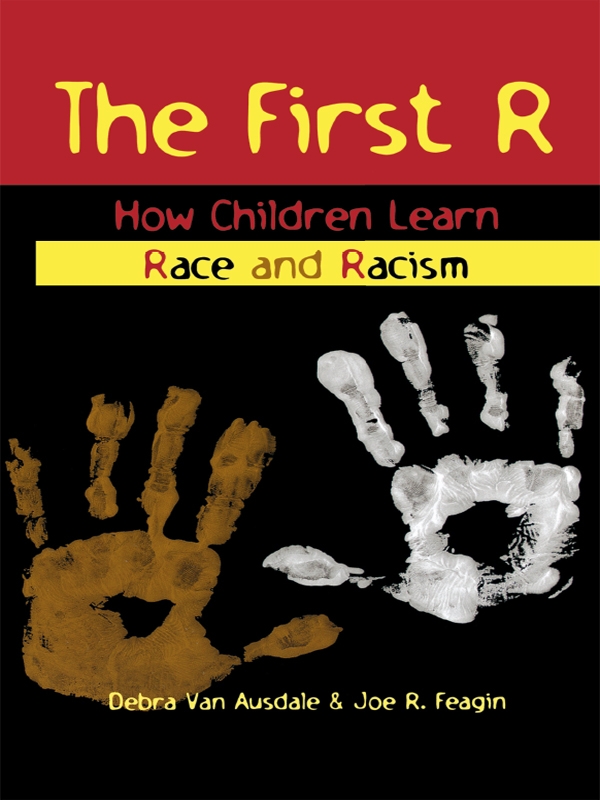
W e are grateful for the cooperation of many people who gave us their time, attention, and respect while we were developing this research. Most of all, we are indebted to the children who embraced and accepted the first author (Debra Van Ausdale) as part of their daily lives. Without their willingness to include her, none of the insights we have gained through this project would have been possible. We are also thankful to the teachers, parents, and administrators at the day care center and to our many colleagues who offered us understanding and support as we did this research and wrote this manuscript.
Any list of those who have been helpful and supportive is necessarily incomplete, but we would like to give special thanks to Hernan Vera, Karen Pyke, Diana Kendall, Barrie Thorne, Bernice Barnet, Nijole Benokraitis, Karyn McKinney, Kendall Broad, and Jessie Daniels for assistance in various ways, including comments on drafts of the manuscript. Marjorie DeVault and Gary Spencer provided special insight and support for the continued development of the ideas in this book. We would also like to thank our editor, Dean Birkenkamp, for his endless support, enthusiasm, and patience.
Watching little children indulge in hateful rhetoric and hurtful interracial activity was the hardest thing Debi had ever done, and there were many occasions when she wanted nothing more than to leave the field to cry. Yet watching them grow in understanding themselves and others was a constant source of wonderment. We have learned much about the social world from them.
Debra Van Ausdale was born in 1954 and received her Ph.D. in sociology from the University of Florida in 1996. She is currently assistant professor of sociology at Syracuse University, where her research interests continue to center on children and racism. She is also conducting ethnographic research on the American motorcycling community.
Joe R. Feagin is currently graduate research professor in sociology at the University of Florida. He mainly does research on a variety of issues connected to racism and sexism. Among his many books are Racial and Ethnic Relations , 6th ed. (1999, with Clairece Booher Feagin); Living with Racism: The Black Middle Class Experience (1994, with Mel Sikes); White Racism: The Basics (1995, with Hernan Vera); Double Burden: Black Women and Everyday Racism (1998, with Yanick St. Jean); The Agony of Education: Black Students at White Colleges and Universities (1996, with Hernan Vera and Nikitah Imani); and The New Urban Paradigm (1998). An earlier book with Harlan Hahn, Ghetto Revolts (1973), was nominated for a Pulitzer Prize, and Living with Racism and White Racism have won the Gustavus Myers Centers Outstanding Human Rights Book Award. He is a recent president of the American Sociological Association.
Aboud, F. E. 1977. Interest in ethnic information: A cross-cultural developmental study. Canadian Journal of Behavioral Science 9:13446.
. 1988. Children and Prejudice . New York: Blackwell.
Addams, J. 1909. The Spirit of Youth and City Streets . New York: Macmillan.
Anti-Defamation League. 1993. Highlights from an Anti-Defamation League Survey on Racial Attitudes in America . New York: Anti-Defamation League.
Arce, C. A. 1981. A reconsideration of Chicano culture and identity. Daedalus 110:177-92.
Aries, P. 1962. Centuries of Childhood: A Social History of Family Life . New York: Random House.
Bachman, J. G., Johnston, L. D., and OMalley, P. M. 1997. Monitoring the Future: Questionnaire Responses from the Nations High School Seniors . Ann Arbor: University of Michigan Institute for Social Research.
Baillargeon, R. 1991. Reasoning about the height and location of a hidden object in 4.5 and 6.5 month old infants. Cognition 38:12-42.
Baillargeon, R., and DeVos, J. 1991. Object permanence in young infants: Further evidence. Child Development 62:122746.
Baillargeon, R., and Hanko-Summers, S. 1990. Is the top object adequately supported by the bottom object?: Young infants understanding of support relations. Cognitive Development 5:2953.
Baughman, E. E., and Dahlstrom, W. G. 1968. Negro and White Children: A Psychological Study in the Rural South . New York: Academic.
Bem, S. L. 1989. Genital knowledge and gender constancy in preschool children. Child Development 60:64962.
Benokraitis, N. V. (Ed.). 1997. Subtle Sexism: Current Practice and Prospects for Change . Thousand Oaks, CA: Sage.
Biddle, B. J. 1992. Role Theory. In Encyclopedia of Sociology (vol. 3, pp. 168185), edited by Edgar F. Borgatta and Marie L. Borgatta. New York: Macmillan.
Bigler, R. S., and Liben, L. S. 1993. A cognitive-developmental approach to racial stereotyping and reconstructive memory in Euro-American children. Child Development 64:150718.
Blumer, H. 1969. Symbolic Interactionism: Perspective and Method . Englewood Cliffs, NJ: Prentice Hall.
Bobo, L., and Suh, S. A. 1995 (August 1). Surveying racial discrimination: Analyses from a multiethnic labor market. University of California, Los Angeles, unpublished report.
Bonilla-Silva, E., and Forman, T. A. 2000. I am not a racist but... : Mapping white college students racial ideology in the U.S.A. Discourse and Society 11:51-86.
Borke, H. 1971. Interpersonal perception of young children: Egocentrism or empathy. Developmental Psychology 5:26369.
Branch, C. W., and Newcombe, N. 1986. Racial attitude development among young Black children as a function of parental attitudes: A longitudinal and cross-sectional study. Child Development 57:71221.
Campbell, S. F. 1976. A Piaget Sampler . New York: Wiley.
Clark, A., Hocevar, D., and Dembo, M. H. 1980. The role of cognitive development in childrens explanations and preferences for skin color. Developmental Psychology 16:33239.
Clark, K. B., and Clark, M. P. 1939. Segregation as a factor in the racial identification of Negro preschool children. Journal of Experimental Education 8:16163.
. 1947. Racial identification and preference in Negro children. In T. M. Newcomb and E. L. Hartley (Eds.), Reading in Social Psychology (pp. 169-78). New York: Holt, Rinehart and Winston.
Connell, R. W. 1985. Theorising Gender. Sociology 19:26072.
Connolly, P. 1998. Racism, Gender Identities and Young Children . London: Routledge.
Corsaro, W. A. 1979. Were friends, right? Language in Society 8:315-36.
. 1981. Entering the childs world: Research strategies for field entry and data collection in a preschool setting. In J. Green and C. Wallat (Eds.), Ethnography and Language in Educational Settings (pp. 11746). Norwood, NJ: Ablex.
. 1997. The Sociology of Childhood . Thousand Oaks, CA: Pine Forge Press.
Corsaro, W. A., and Miller, P. J. 1992. Interpretive Approaches to Childrens Socialization . New Directions for Child Development Series, Number 58, Winter. San Francisco: Jossey-Bass.
Cross, W. E., Jr. 1987. A two-factor theory of Black identity: Implications for the study of identity development in minority children. In J. S. Phinney and M. J. Rotheram (Eds.), Childrens Ethnic Socialization: Pluralism and Development (pp. 11733). Newbury Park, CA: Sage.
Cross, W. E., Jr. 1991. Shades of Black: Diversity in African-American Identity. Philadelphia: Temple University Press.
Damon, W. 1977. The Social World of the Child . San Francisco: Jossey-Bass.
Danielewicz, J. M., Rogers, D. L., and Noblit, G. 1996. Childrens discourse patterns and power relations in teacher-led and child-led sharing time. Qualitative Studies in Education 9:31131.
Font size:
Interval:
Bookmark:
Similar books «The First R: How Children Learn Race and Racism»
Look at similar books to The First R: How Children Learn Race and Racism. We have selected literature similar in name and meaning in the hope of providing readers with more options to find new, interesting, not yet read works.
Discussion, reviews of the book The First R: How Children Learn Race and Racism and just readers' own opinions. Leave your comments, write what you think about the work, its meaning or the main characters. Specify what exactly you liked and what you didn't like, and why you think so.

